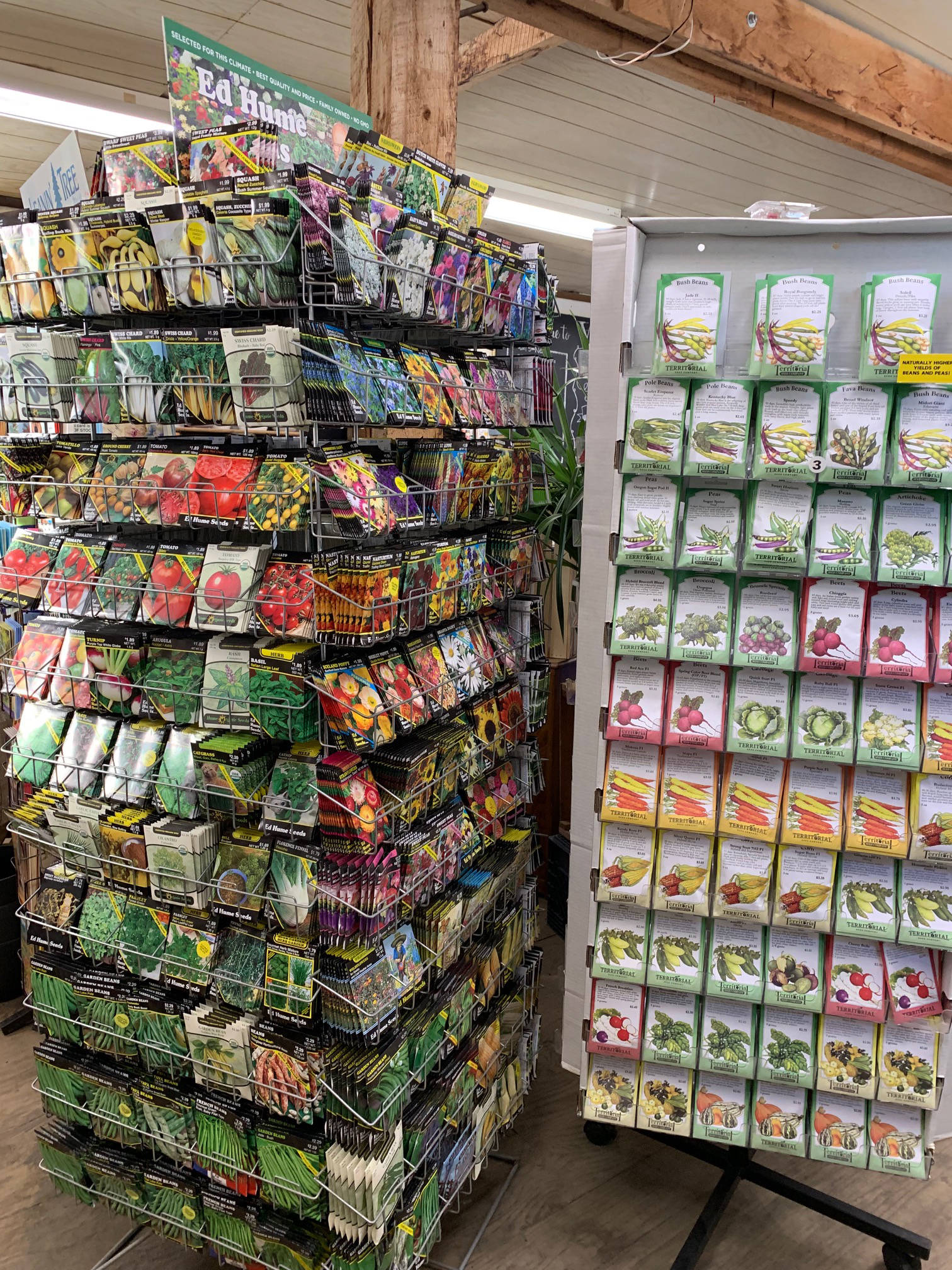Now that the sun has meaning you should consider washing your windows, especially if your intention is to start plants from seed. Which, of course, you will do no matter how many times I tell you not to.
I have friends who start from seed and do not use artificial lights. They have big, clean south facing windows and use them to their advantage. They have started all the same seeds that I have and I know from experience that they will have good enough seedlings. And there is the key — “good enough.” Being longtime gardeners they know what to do with stringy seedlings. Do you? Probably not. So, read on and glean what you may on the topic of seed starting.
I use fluorescent lights that are installed in a bona fide plant stand. It can accommodate 10 flats of seedlings. I’ve had this set up for 40 years. That may seem like forever, but considering it is used for just a few weeks each year its longevity is a given. The lights are left on 24/7. No timer. Trust me. Leave them on. But because of that usage, they are changed out every few years. I am now using actual plant lights, but you can use one warm and one cool in the two bulb fixture.
Take note that it will hold 10 seed flats. No, I no longer start that many seedlings because I will take advantage of our excellent local nurseries.
What I have started are: two kinds of onions, shallots, two kinds of leeks, five kinds of tomatoes (plus two kinds that Marcee Gray harvested from tomatoes that she liked while in Chile; we’ll see how that goes), artichokes and, last but not least, Victorian Posy, which is a precursor of the pansies that we all know and should love. They take forever to germinate. This makes for a total of three flats, at the moment. They will develop into several more as they mature.
But, let’s get started: You will need some commercial potting medium (soil). I don’t use compost to start seeds because I think they need all of the help they can get and a sterile soil meets that need. For all of the alliums I take a 4-inch-by-2-inch container, fill with soil, dampen, sprinkle (broadcast) the seeds over the surface, apply a little more soil, dampen again, cover with plastic wrap that has been reused for years and years to keep the surface moist, put under the lights, and wish them well. Never ever let them dry out.
The seeds that have not been broadcast are planted in four cell containers. You won’t need as many of these so you will have more control over how many you plant. For instance: I start four each of my five varieties of tomatoes. I only need one or two but I like to make sure I have excellent seedlings to start with so I am hedging my bets. The ones that are left over always find a home.
Once they are up and running, you need to adjust the height of the lights. I keep them as close to the surface as possible until they germinate, then I start the process of raising the lights so the plants don’t touch but are still close.
Once they have germinated, you will separate them and pot them up in larger, individual containers where they will thrive until you can either put them in your greenhouse or actually plant them in the garden.
Now, I ask you: doesn’t buying excellent, healthy, sturdy seedlings sound like the way to go?
Here’s where the seed racks that are all over this little town come into play. There are vegetables that you will start from seed directly in the garden plot, just like in the real world. Lettuce, radish, chard, peas, potatoes, spinach, carrots, beets. The brassica class (all that is cabbage: broccoli, cauliflower, kale, turnips, Brussels sprouts, kohlrabi, turnips) can actually be planted from seed rather than seedling. But you will wait forever to make a harvest. We don’t have forever.
We won’t be planting anything outside until the middle to the end of May, depending on what kind of challenging weather we will meet and what elevation you have doomed yourself to. Everything I mentioned that I am starting now take forever to germinate, so an early start is imperative if I expect a harvest. And that certainly is the point.
Another thought: you need to be dealing with your stored plants. I only have tuber begonias, which I love with an unreasonable passion. They are ever so easy and bloom like crazy on the north side of the house. I store them in brown paper lunch bags, one to a bag. They have been released from their confinement, placed in fresh soil in appropriate pots, watered, and are now on the guest room windowsill. Excellent. If you are a fan of fuchsia and/or pelargonium (aka: geranium) you should take a look at them and introduce them to the steadily increasing sunlight. If they have gotten leggy, just cut them back and let them restart.
You will be gardening sooner rather than later, but only start seeds that need ages to germinate. Read the seed packet and act accordingly.
All will be well.
Rosemary Fitzpatrick is a longtime Homer gardener and has been writing Kachemak Gardener since 1990.


